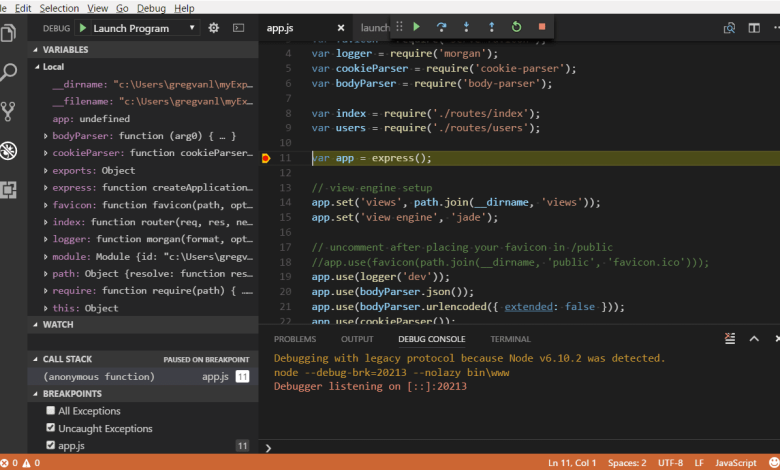How to Start Learning Node.js from Scratch

Node.js has transformed the world of JavaScript by allowing developers to run it outside the browser, on the server side. With Node.js, developers can build scalable, fast, and event-driven applications ranging from APIs and real-time chat apps to streaming
services and enterprise platforms.
If you’re completely new to Node.js, this guide will show you how to start learning it from scratch. We’ll cover the basics, the essential concepts, and the learning path you can follow to become a confident Node.js developer.
1. What Is Node.js?
Node.js is not a programming language—it’s a runtime environment built on the V8 JavaScript engine (the same engine that powers Google Chrome).
Key characteristics:
- Non-blocking I/O: Handles multiple requests at the same time.
- Event-driven: Perfect for real-time applications.
- Lightweight and fast: Great for microservices and APIs.
- Cross-platform: Works on Windows, macOS, and Linux.
2. Why Learn Node.js?
Node.js is one of the most in-demand skills in the job market. Reasons to learn:
- Full-stack development with just one language: JavaScript.
- Large ecosystem with npm (Node Package Manager).
- High-paying job opportunities in backend and full-stack roles.
- Used by companies like Netflix, PayPal, LinkedIn, and Uber.
3. Prerequisites Before Learning Node.js
Before diving into Node.js, you should have:
- Good knowledge of JavaScript (functions, objects, arrays, async/await).
- Basic understanding of HTML and CSS.
- Familiarity with the command line/terminal.
4. Setting Up Node.js
To get started:
- Download and install Node.js from the official website.
-
Verify installation:
-
Create your first file
app.js: -
Run it:
5. Core Concepts in Node.js
Here are the most important concepts to master:
- Modules: Node.js is modular. You can import built-in or custom modules using
require()or ES modules (import). - NPM: The package manager for Node.js.
- File System (fs module): For reading and writing files.
- Events and EventEmitter: Core of Node’s event-driven model.
- Streams: Handle large amounts of data efficiently.
- Asynchronous programming: Using callbacks, promises, and async/await.
6. Building Your First Server
Here’s a simple HTTP server in Node.js:
Run this code and visit http://localhost:3000 in your browser.
7. Learning Path for Node.js
Here’s a structured path to follow:
- Basics of Node.js – Modules, events, streams, npm.
- Working with Express.js – A framework for building APIs and web apps.
- Databases – Learn to connect Node.js with MongoDB, MySQL, or PostgreSQL.
- Authentication & Security – JWT, OAuth, and handling user data securely.
- Real-time Apps – Using WebSockets and Socket.io.
- Testing & Debugging – Using Jest, Mocha, or Supertest.
- Deployment – Deploy apps to services like Heroku, Vercel, or AWS.
8. Best Resources to Learn Node.js
- Official Node.js Docs (free and detailed).
- MDN Web Docs for JavaScript fundamentals.
- Online courses on Udemy, FreeCodeCamp, or Codecademy.
- YouTube tutorials and coding practice projects.
9. Practical Projects to Build
- To-do list API with Express.js
- Real-time chat application with Socket.io
- File upload service with Multer
- REST API for e-commerce products
- Blog backend with authentication
10. Tips for Success
- Practice daily by building small projects.
- Learn by reading other developers’ code on GitHub.
- Join communities (Reddit, Stack Overflow, Discord).
- Focus on problem-solving, not just memorizing code.
Conclusion
Learning Node.js from scratch might seem overwhelming, but with consistent practice and a clear roadmap, you can master it. Start with the basics of JavaScript, install Node.js, build small projects, and gradually move to advanced topics like databases and real-time apps.
Node.js is a skill that will open many career opportunities and allow you to build powerful full-stack applications—all with JavaScript.

